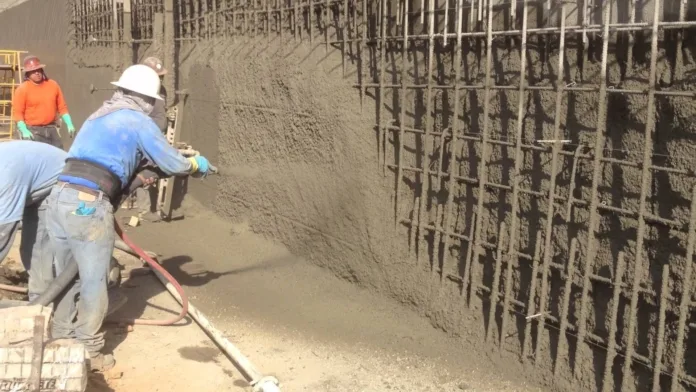Shotcreting is a construction method where a mixture of cement, water, and aggregates is projected onto surfaces at high velocity using a specialized spray nozzle. This process allows for the application of concrete or mortar in a flexible and efficient manner, particularly on irregular or vertical surfaces. The high-pressure application ensures strong adhesion and a dense, durable finish, making it ideal for reinforcing structures, forming complex shapes, and creating protective coatings.
Shotcreting is used in:
- Structural Repairs: Reinforcing and repairing damaged concrete structures.
- Tunnels and Underground Construction: Lining and forming tunnel walls and ceilings.
- Retaining Walls: Building or reinforcing retaining walls to support soil.
- Slope Stabilization: Preventing erosion on slopes.
- Swimming Pools: Constructing and resurfacing pools.
- Mining: Stabilizing mine shafts and supporting excavation operations.
Advantages of Shotcreting
- Fast application speeds up construction processes.
- Versatility for various surfaces, including vertical and overhead.
- Strong adhesion to existing surfaces and structures.
- Durable and robust finish.
- Reduced need for traditional formwork.
- Cost-effective, potentially lowering project costs.
- Flexibility in creating intricate and complex shapes.
- High structural reinforcement strength.
- Good coverage of difficult and irregular areas.
- Minimal material waste compared to other methods.
- Enhanced resistance to weathering and environmental conditions.
- Ease of application in challenging or hard-to-reach areas.
Types of shotcreting methods
There are two types of shotcreting methods:
Wet-Mix Shotcreting
Wet-Mix Shotcreting involves pre-mixing the concrete, which includes water, cement, and aggregates, before it is pumped to the nozzle. At the nozzle, air is added to propel the mixture onto the surface. This method ensures a consistent mix and high-quality application, making it ideal for large-scale or continuous projects where uniformity and quality are important.
Dry-Mix Shotcreting
Dry-Mix Shotcreting involves conveying a dry blend of cement and aggregates to the nozzle, where water is added just before the mixture is sprayed onto the surface. This approach allows for flexible adjustment of the water content on-site, making it well-suited for smaller or more focused projects.
Different types of shotcreting machines and tools
1. Shotcrete Machines
Dry-Mix Shotcrete Machine: The dry-mix shotcrete machine is designed to deliver a mixture of cement and aggregate in a dry form. This dry mix is transported through a hose and combined with water at the nozzle just before application. The advantage of this system lies in its ability to offer precise control over the mix’s moisture content and consistency right at the application point. This method is particularly beneficial in applications requiring high strength and minimal waste, such as in tunnelling and steep slope stabilization. Dry-mix shotcreting allows for better control over the application rate and thickness, making it suitable for complex and demanding environments.
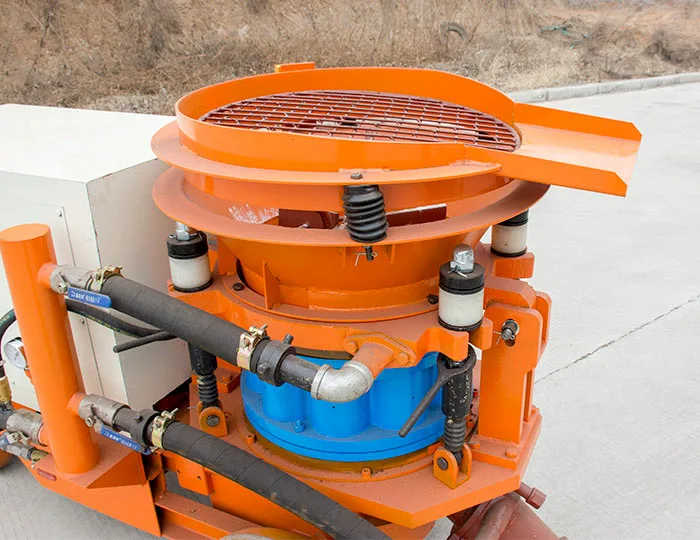
Wet-Mix Shotcrete Machine: In contrast, the wet-mix shotcrete machine pre-mixes cement, aggregates, and water into a homogeneous slurry before delivery to the application site. This type of shotcreting is favoured for its ease of application and consistent quality. The pre-mixed slurry ensures uniformity in the shotcrete, reducing the risk of segregation or inconsistent strength. Wet-mix machines are typically used for larger-scale projects where a steady and reliable flow of material is essential. The application process is smoother, and the risk of rebound (the material bouncing off the surface) is minimized, leading to better material efficiency and surface finish.
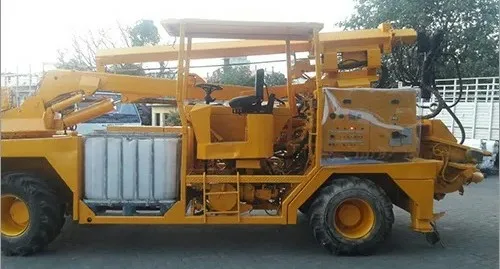
2. Concrete Pumps
Boom Pumps: Concrete boom pumps are mounted on a truck and equipped with an articulated arm, or boom, that extends and manoeuvres to reach various points on the construction site. The versatility of the boom pump allows it to place shotcrete precisely where it’s needed, even in challenging locations like high-rise buildings or deep excavations. The boom’s reach can be adjusted, providing flexibility and reducing the need for additional equipment or manual handling. This type of pump is particularly useful for large-scale projects requiring high volumes of shotcrete and precise placement.

Line Pumps: Line pumps use a series of hoses or pipes to transport shotcrete from the machine to the application site. They are ideal for smaller projects or where the application site is not easily accessible with a boom pump. Line pumps are more compact and flexible, making them suitable for applications with limited space or intricate site layouts. They can handle a variety of shotcrete mixes and are effective for delivering material over short distances or around obstacles. Although they might not have the reach of a boom pump, line pumps offer efficiency and cost-effectiveness for less extensive applications.
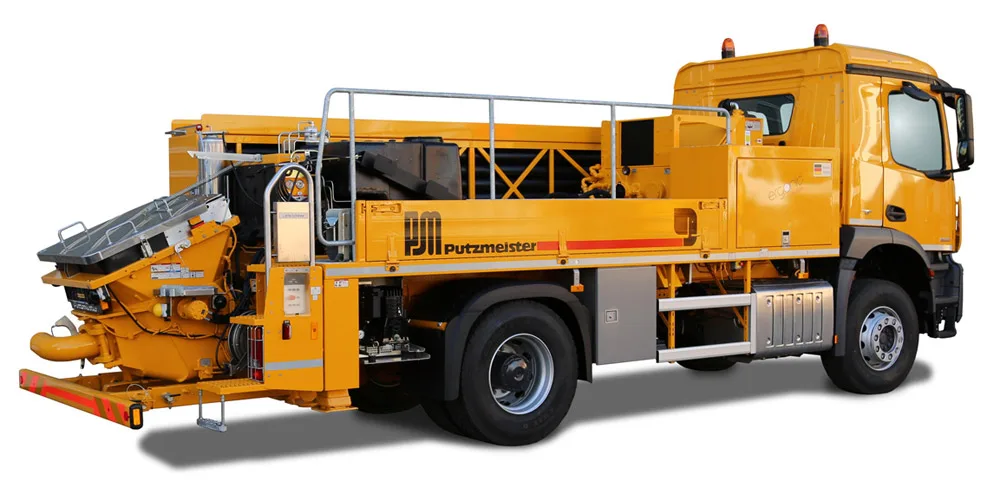
3. Air Compressors
Rotary Screw Compressors: These compressors are designed to provide a continuous and reliable supply of compressed air to the shotcrete machine. Rotary screw compressors use two interlocking screws to compress air, offering high efficiency and consistent pressure. This type of compressor is favoured for its ability to operate for extended periods without significant downtime, making it suitable for large-scale or continuous shotcreting operations. The steady airflow helps maintain the correct pressure for the shotcrete machine, ensuring optimal performance and quality in the application process.
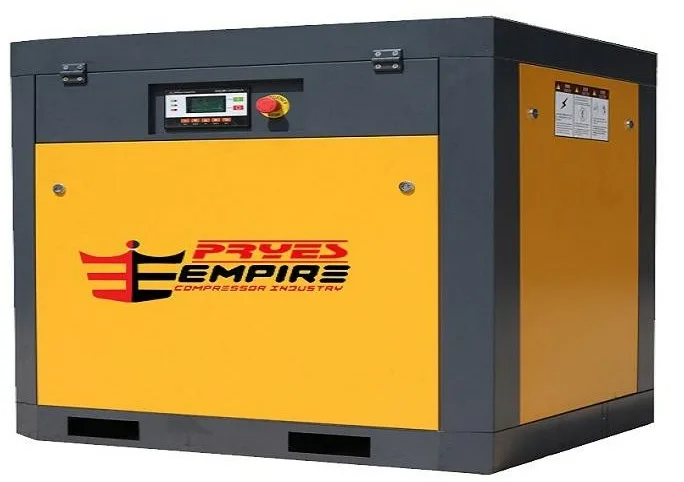
Reciprocating Compressors: Reciprocating compressors, or piston compressors, use a back-and-forth motion of a piston to compress air. They are typically used for smaller-scale projects or as auxiliary compressors in larger operations. While they might not offer the same continuous operation as rotary screw compressors, reciprocating compressors can still provide adequate pressure for shortcrete applications.

4. Nozzles and Hoses
Shotcrete Nozzles: The nozzle is a crucial component of the shotcrete application system, controlling the delivery and mixing of the shotcrete material. Nozzles come in various sizes and designs, including manual and automatic types, to suit different application needs. Manual nozzles require the operator to adjust the mix and application rate, offering flexibility for varying project conditions. Automatic nozzles, on the other hand, provide consistent mixing and application, reducing the potential for human error and ensuring uniform application. The choice of nozzle impacts the quality and efficiency of the shotcrete application, making it a key factor in achieving desired results.
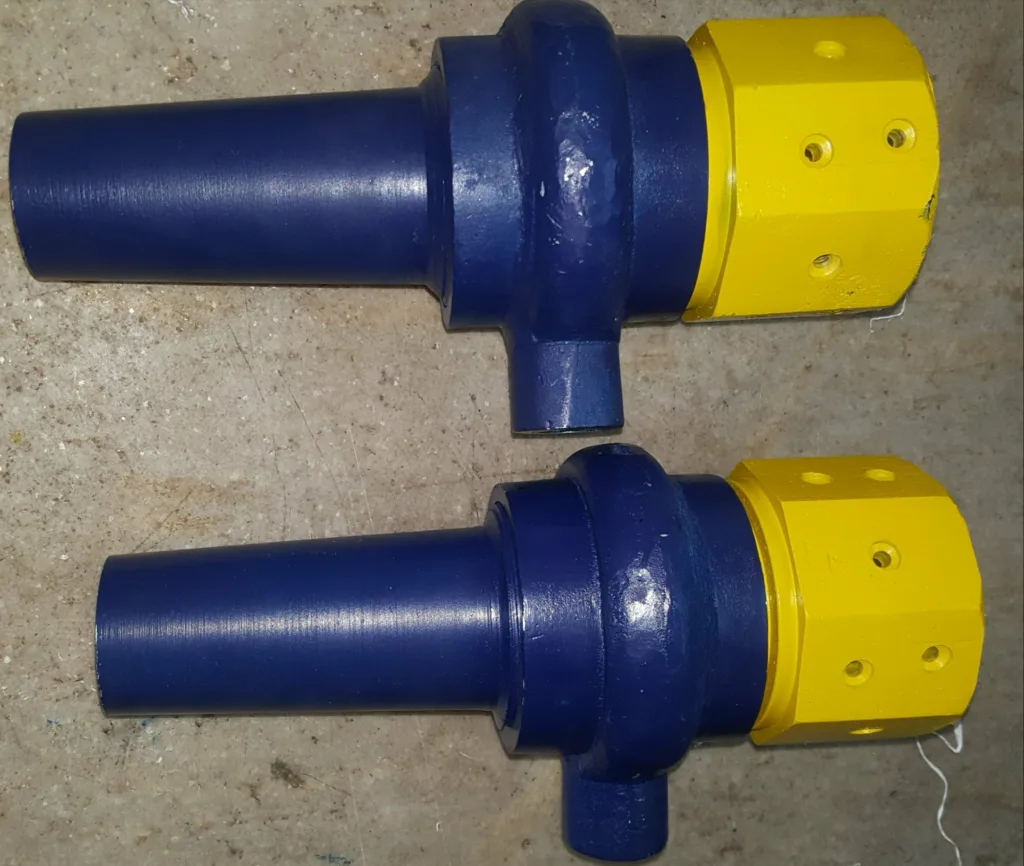
Delivery Hoses: Delivery hoses are flexible, durable tubes that transport the shotcrete mix from the machine to the application site. These hoses must withstand the high pressure and abrasive nature of the shotcrete material. They come in various lengths and diameters to accommodate different project requirements.
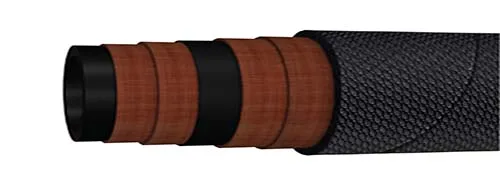
Conclusion
Shotcreting, combined with right practice and advanced shotcreting equipment, presents a powerful solution for delivering high-quality concrete applications across various construction projects. As technology continues to evolve, shotcreting and its associated equipment will play an increasingly important role in enhancing construction practices, offering robust and reliable solutions for both new builds and rehabilitation projects.
Image Source: mlgsindia.com, indoconstruction.co.in, schwingstetterindia.com, putzmeister.com, pryescompressors.com, elgi.com, polyhose.com

